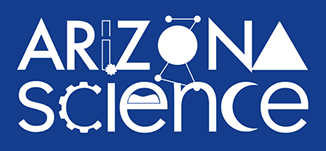 A look into a eukaryote cell to see how proteins are made.
A look into a eukaryote cell to see how proteins are made.
Nicolle Rager, National Science Foundation
Being able to see an object helps us to understand complex design and function quickly. That holds also true even for the microscopic machinery that drives our body. Using biomolecular nuclear magnetic resonance spectroscopy, the high resolution cousin of the MRI technique used in medicine, Wolfgang Peti can visualize enzyme proteins to understand their shape and mobility and how the mobility enables the enzymes to perform their specialized physiological functions. This is important as enzyme dysfunction commonly leads to disease.
In this episode:
Wolfgang Peti, Ph.D., Profesor, Department of Chemistry and Biochemistry
Leslie P. Tolbert, PhD, Regents' Professor in Neuroscience at the UA
Catch Arizona Science each Friday during Science Friday on NPR 89.1. You can subscribe to our podcast on Apple Music, Spotify, Amazon Music, or the NPR App. See more from Arizona Science.
MORE: Arizona Science


By submitting your comments, you hereby give AZPM the right to post your comments and potentially use them in any other form of media operated by this institution.